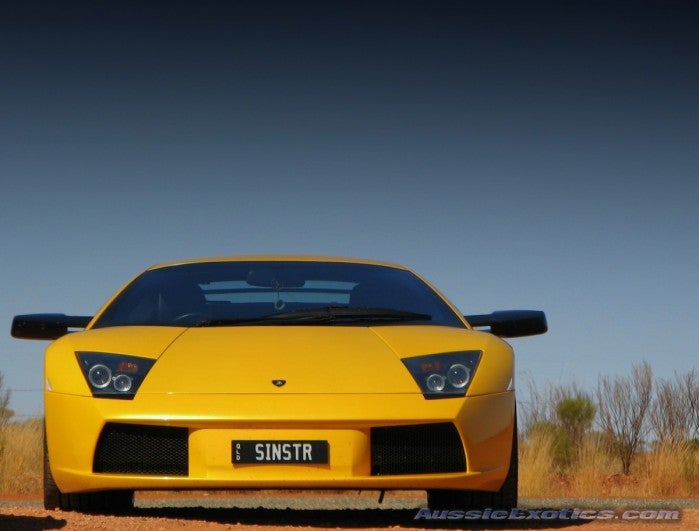The Aston Martin V8 is a two-door saloon-type automobile manufactured in the United Kingdom from 1969 to 1990.
Aston Martin’s customers had been clamouring for an eight-cylinder car for years, so Aston Martin designed a larger 2-door saloon for V8 applications. The engine was not ready, however, so in 1967 the company released the DBS with the straight-6 Vantage engine from the DB6. Two years later, Tadek Marek’s V8 was ready, and Aston released the DBS V8. With the demise of the straight-6 Vantage in 1973, the DBS V8, now called simply the Aston Martin V8, became the company’s mainstream car for two decades. It was retired in favour of the Virage in 1990.
DBS V8
From 1969 through 1972, Aston’s top car was the DBS V8. Though the body and name was shared with the six-cylinder DBS, the V8 sold for much more. The body was a modern reinterpretation of the traditional Aston Martin look, with a squared-off grille and four headlights (though some consider the styling derivative of the early Ford Mustang). Distinguishing features of the V8 model are the larger front air dam and lack of wire wheels, though some six-cylinder DBS cars also used the V8’s alloy wheels. The tail lights were taken from the Hillman Hunter.
Marek’s V8 engine displaced 5.3 L (5340 cc/325 in³) and used Bosch fuel injection. Output was not officially released, but estimates center around 315 hp (235 kW). The DBS V8 could hit 60 mph (97 km/h) in 5.9 seconds and had a top speed of nearly 160 mph (257 km/h).
A DBS V8 was to be used by Roger Moore in the television show, The Persuaders!. However, no V8 car was ready, so a six-cylinder DBS was modified to look like a V8 for use in the show.
V8
In April, 1972, the DBS V8 became just the Aston Martin V8 as the six-cylinder DBS was dropped, leaving just this car and the Vantage in production. Although David Brown had left the company, he had overseen development of this model.
Series 2
The V8 became known as the Series 2. Visual differences included twin quartz headlights and a mesh grille. Series 2 cars, produced from 1972 through July 1973, used a similar engine to the DBS V8. Just 288 Series 2 cars were built.
Series 3
The car switched back to carburettors for Series 3 in 1973. These cars are distinguished by a taller hood scoop to accommodate four twin-choke Weber carbs. The car produced 310 hp (231 kW) and could reach 60 mph (97 km/h) in 6.1 seconds with an automatic transmission or 5.7 with a manual. Performance suffered with emissions regulations, falling to 288 hp (215 kW) in 1976. The next year, a more powerful “Stage 1” engine with new camshafts and exhaust brought it back up to 304 hp (227 kW).
Production of Series 3 cars lasted from 1973 through October 1978, but was halted for all of 1975. 967 examples were produced in this time.
Series 4 (“Oscar India”)
The “Oscar India” specification was introduced in October of 1978 at the Birmingham International Motor Show. Visually, the former scoop on the bonnet gave way to a closed “power bulge”, while a spoiler was integrated into the tail. Most Oscar India cars were equipped with a Chrysler “Torqueflite” 3-speed automatic transmission, with wood trim fitted for the first time since the DB2/4 of the 1950s. Just 291 Oscar India models were built from 1978 through 1985.
Series 5
The fuel injected Series 5 cars were introduced in 1986 at the New York International Auto Show. The compact Weber/Marelli system no longer needed the space of the previous carburettors, so the bonnet bulge was virtually eliminated.
Only 61 Series 5 cars were built before production ceased in 1989.
James Bond
James Bond’s car (“B549 WUU”) in the 1987 film, The Living Daylights is somewhat confusing. At the beginning of the film, the car is a V8 Vantage Volante (convertible), complete with Vantage badges. The actual car used in these scenes was a preproduction Vantage Volante owned by Aston Martin Lagonda chairman, Victor Gauntlett. Later, the car is supposedly fitted with a hardtop (“winterised”) at Q Branch. However, these scenes actually feature a pair of non-Vantage V8 saloons retrofitted with the same number plate and Vantage badges as the car in the beginning, among other “optional extras” like spiked tyres, skis, lasers, and missiles. Clearly, the car was intended to be seen as a V8 Vantage Volante, however.[1]

















 Your Privacy Choices
Your Privacy Choices